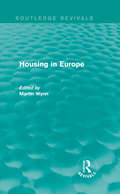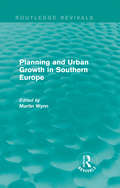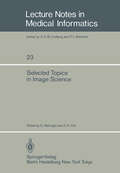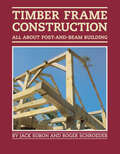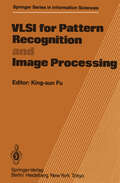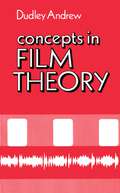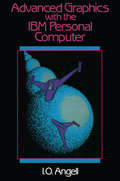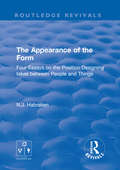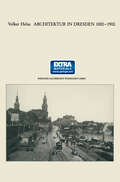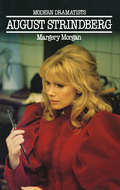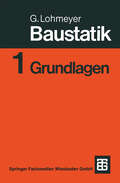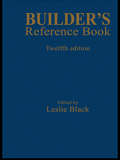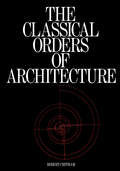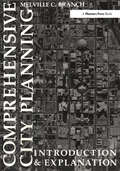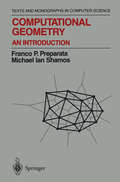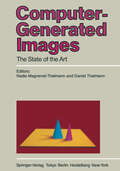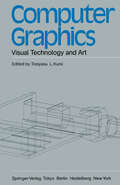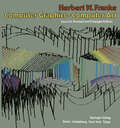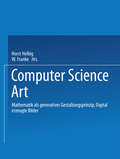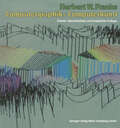- Table View
- List View
Routledge Revivals: Housing in Europe (Routledge Revivals)
by Martin WynnFirst published in 1984, this book presents a survey of housing problems in various European countries and how individual states have responded. Each chapter begins by surveying the problem in each country since the Second World War, before going on to outline the roles fulfilled by national housing agencies and local authorities, as well as assessing the impact of housing policies on society and on the physical shape of cities. It considers whether housing policies have succeeded or failed and how the ‘housing problem’ has changed over time. Each chapter draws out lessons that can be learned for the future from each country’s past handling of the problem. This book will be a useful reference for those interested in housing, including planners, geographers, economists, sociologists or policy-makers.
Routledge Revivals: Planning and Urban Growth in Southern Europe (Routledge Revivals)
by Martin WynnFirst published in 1984, this book addresses key questions about the pattern of urban development in Southern Europe and the mechanisms employed to control and regulate this development in individual countries. It examines five countries – Greece, Italy, Portugal, Spain and Turkey – that have experienced different scales and rates of urbanization and industrialization. It identifies common problems arising from these processes, as well as the successes and failures of the planning policies employed to regulate development. This book will be of great value to geographers interested in Southern Europe and urban and regional planners interested in comparative patterns of development.
Routledge Revivals: Planning and Urban Growth in Southern Europe (Routledge Revivals)
by Martin WynnFirst published in 1984, this book addresses key questions about the pattern of urban development in Southern Europe and the mechanisms employed to control and regulate this development in individual countries. It examines five countries – Greece, Italy, Portugal, Spain and Turkey – that have experienced different scales and rates of urbanization and industrialization. It identifies common problems arising from these processes, as well as the successes and failures of the planning policies employed to regulate development. This book will be of great value to geographers interested in Southern Europe and urban and regional planners interested in comparative patterns of development.
Selected Topics in Image Science (Lecture Notes in Medical Informatics #23)
by Orhan Nalcioglu and Zang-Hee ChoThe continuing growth of computed tomography (CT) and other imaging techniques motivated us to bring together a comprehensive review of the state of the art in diagnostic imaging. Twelve years after the first appearance of x-ray CT, computerized diagnostic imaging has grown so rapidly in sophistication that it is difficult to follow current developments in this diversified field. In this book, we have attempted to cover the basic developments in several areas. The first part includes some of the fundamental aspects of computerized diagnostic imaging such as algorithms and detectors. Specific applications in emission tomography, digital radiography, ultrasound and nuclear magnetic resonance imaging are dealt with in the secondpart. The contributed papers are by experts currently in the field, whom we feel would certainly enlighten the subject matter and possibly suggest directions for future development. We would like to express our sincere thanks to those who have contributed to this volume. We are sure that their original papers will be beneficial for readers and will also remain as an important reference for researchers in the years to come. We would also like to thank Betty Trent for her expert and patient typing of the entire book. Finally, special thanks are due to Mrs. Ingeborg Mayer of Springer-Verlag for her encouragements, support and patience throughout the preparation of this book.
Timber Frame Construction: All About Post-and-Beam Building
by Jack A. Sobon Roger SchroederDiscover the satisfaction of making your own durable, economical, and environmentally friendly timber frame structures. Covering all aspects of timber frame construction, this practical guide is filled with easy-to-understand instructions, clear illustrations, and helpful photographs. With expert advice on selecting appropriate timber, necessary tools, safety considerations, joinery techniques, assembly, and raising, Jack Sobon and Roger Schroeder encourage beginners by offering complete plans for a small toolshed. Turn your dream of a timber frame house into a reality.
VLSI for Pattern Recognition and Image Processing (Springer Series in Information Sciences #13)
by K. S. FuDuring the past two decades there has been a considerable growth in interest in problems of pattern recognition and image processing (PRIP). This inter est has created an increasing need for methods and techniques for the design of PRIP systems. PRIP involves analysis, classification and interpretation of data. Practical applications of PRIP include character recognition, re mote sensing, analysis of medical signals and images, fingerprint and face identification, target recognition and speech understanding. One difficulty in making PRIP systems practically feasible, and hence, more popularly used, is the requirement of computer time and storage. This situation is particularly serious when the patterns to be analyzed are quite complex. Thus it is of the utmost importance to investigate special comput er architectures and their implementations for PRIP. Since the advent of VLSI technology, it is possible to put thousands of components on one chip. This reduces the cost of processors and increases the processing speed. VLSI algorithms and their implementations have been recently developed for PRIP. This book is intended to document the recent major progress in VLSI system design for PRIP applications.
Concepts in Film Theory
by J. Dudley AndrewConcepts in Film Theory is a continuation of Dudley Andrew's classic, The Major Film Theories. In writing now about contemporary theory, Andrew focuses on the key concepts in film study -- perception, representation, signification, narrative structure, adaptation, evaluation, identification, figuration, and interpretation. Beginning with an introductory chapter on the current state of film theory, Andrew goes on to build an overall view of film, presenting his own ideas on each concept, and giving a sense of the interdependence of these concepts. Andrew provides lucid explanations of theories which involve perceptual psychology and structuralism; semiotics and psychoanalysis; hermeneutics and genre study. His clear approach to these often obscure theories enables students to acquire the background they need to enrich their understanding of film -- and of art.
The Appearance of the Form: Four Essays on the Position Designing takes between People and Things (Routledge Revivals)
by N.J. HabrakenOriginally published in 1985 this book explores, in four interwoven essays, the many ways human life and built form interact and the place that professional designing takes in this interaction. Together, the essays touch on a number of ideas: the idea that our position in space relative to the thing we are designing determines the methods we apply when designing it; the idea that designing is about making proposals, and is therefore a social act first of all; and the idea that agreements, consensus and above all conventions shape the act of designing things independent of their creative qualities.
The Appearance of the Form: Four Essays on the Position Designing takes between People and Things (Routledge Revivals)
by N.J. HabrakenOriginally published in 1985 this book explores, in four interwoven essays, the many ways human life and built form interact and the place that professional designing takes in this interaction. Together, the essays touch on a number of ideas: the idea that our position in space relative to the thing we are designing determines the methods we apply when designing it; the idea that designing is about making proposals, and is therefore a social act first of all; and the idea that agreements, consensus and above all conventions shape the act of designing things independent of their creative qualities.
Architektur in Dresden 1800 – 1900
by Volker HelasDie Residenzstadt Dresden erlebte im 19. Jahrhundert die Architektur und die Verwendung historisierender Stil Industrielle Revolution. Es entstanden ein neues sozial zitate kennzeichnend. Letzteres kann als Charakteristi ökonomisches System, neue politische Strukturen, neue kum für die Architektur dieses Jahrhunderts betrachtet Bauaufgaben. Die wirtschaftliche Betätigung, die Bevölke werden. Die Untersuchung setzt ein, als diese Gestaltungs rung und das Bauaufkommen wuchsen um ein Vielfaches. weise zur dominierenden wurde und endet, als sich die In diesem Buch soll die Architektur der Stadt zwischen Einsicht verbreitete, daß eine Stilverbrämung in der Archi 1800 und 1900 untersucht werden. Doch nur allzu be tektur entbehrlich sei, da die Gesellschaft des Rückbezuges und der Rückversicherung bei der Historie nicht mehr be kannt ist, daß die Stadt dieses Zeitabschnitts nicht mehr dürfe. Die Zäsur, die durch diese Erkenntnis markiert existiert. Nicht, weil sie überformt worden wäre, sondern weil weite Flächen der Stadt am 13. /14. Februar 1945 wurde, kann unterschiedlich gezogen werden, entweder zerstört worden sind. Es wird daher der Versuch unter mit dem Aufkommen des Jugendstils oder mit der Neuen nommen, durch die gedankliche Rekapitulation des Sachlichkeit. Für Dresden ist die Jahrhundertwende als Gebauten einen Aufschluß darüber zu gewinnen, welche Zeitschnitt gewählt worden, weil sich um 1900 ein sehr Idealbilder Bauherren und Architekten bewegt hatten. deutlicher Sinneswandel im Umgang mit dem historischen Bilden doch Bauten Weltsichten ab, wie sie, um diese Formzitat bemerken läßt. hervorzubringen, errichtet wurden. Bauwerke deuten eine Die Untersuchung der Dresdner Architektur im 19.
Baustatik: Teil 1: Grundlagen
by Gottfried C LohmeyerModeme Baukonstruktionen erfordern ein sorgfältiges Planen, Konstruieren und Ausfüh ren. Dazu sind solide Kenntnisse der Baustatik nötig. Dies gilt nicht nur für den Konstrukteur und Statiker, sondern auch für den Planenden im Architekturbüro und den Bauleiter auf der Baustelle. Bei der Planung, Konstruktion und Ausführung eines Bauwerkes ist nicht nur seine Funk tion ausschlaggebend. Um Bauschäden zu vermeiden, müssen die Baustoffe entsprechend ihren Eigenschaften eingesetzt werden; die Bauteile sind unter Beachtung ihrer statischen Bedeutung zu konstruieren und die jeweils neuesten Erkenntnisse der Bauphysik zu berücksichtigen. Das vorliegende zweiteilige Werk vermittelt die wichtigen einfachen statischen Gesetze und deren Anwendung im Rahmen einer technischen Allgemeinbildung; es dient nicht der Ausbildung spezialisierter Statiker. Manche Probleme werden daher bewußt vereinfacht und dem Zweck des Buches entsprechend besonders praxisnah dargestellt. Viele durchgerechne te Beispiele erläutern und vertiefen die Darstellung; eine sehr große Zahl von Übungsaufga ben, deren Lösungen am Bandende gebracht werden, soll zur sicheren Handhabung und breiten Anwendung des Stoffes befähigen. Die beiden Bände werden daher vielen in der Bautechnik Tätigen eine Hilfe bei der Lösung üblicher statischer Probleme sein; sie sind zum Selbststudium geeignet. Teil 1 "Grundlagen" geht auf die wichtigsten Probleme der einfachen Statik ein. Ohne komplizierte theoretische Ableitungen werden die Formeln entWickelt und dargestellt, die zur Bestimmung der äußeren und inneren Kräfte in den Bauteilen erforderlich sind. Besondere mathematische Kenntnisse werden nicht vorausgesetzt. Teil 2 "Festigkeitslehre" erklärt die Beanspruchung der Bauteile und die Bemessung von Konstruktionsteilen aus Holz, Mauerwerk, Beton und Stahl sowie die Bodenpressung.
Builder's Reference Book
by Leslie BlackA comphensive guide to information sources relevant to the building industry and legislation affecting it. It is designed for use as a tool either in the office or on site, giving facts in a compendium style to meet the most common requirements of the busy builder.
Builder's Reference Book
by Leslie BlackA comphensive guide to information sources relevant to the building industry and legislation affecting it. It is designed for use as a tool either in the office or on site, giving facts in a compendium style to meet the most common requirements of the busy builder.
A Certain Tendency of the Hollywood Cinema, 1930-1980
by Robert B. RayRobert B. Ray examines the ideology of the most enduringly popular cinema in the world--the Hollywood movie. Aided by 364 frame enlargements, he describes the development of that historically overdetermined form, giving close readings of five typical instances: Casablanca, It's a Wonderful Life, The Man Who Shot Liberty Valance, The Godfather, and Taxi Driver. Like the heroes of these movies, American filmmaking has avoided commitment, in both plot and technique. Instead of choosing left or right, avant-garde or tradition, American cinema tries to have it both ways.Although Hollywood's commercial success has led the world audience to equate the American cinema with film itself, Hollywood filmmaking is a particular strategy designed to respond to specific historical situations. As an art restricted in theoretical scope but rich in individual variations, the American cinema poses the most interesting question of popular culture: Do dissident forms have any chance of remaining free of a mass medium seeking to co-opt them?
The Classical Orders of Architecture
by Robert ChithamThe Classical Orders of Architecture elaborates on the classical orders of architecture, including Classicism, Tuscan orders, Doric orders, Ionic orders, and Corinthian orders. The publication first examines the teaching of the orders, need for a new handbook of the orders, Roman and Renaissance theorists, traditional systems of proportion, and metric system of measurement. The text then ponders on historical background and orders in detail. Discussions focus on the Greek orders and comparative Tuscan orders, Doric orders, Ionic orders, Corinthian orders, and Composite orders. The book tackles the orders in detail, including the five orders, Tuscan order, Tuscan capital and entablature, Tuscan base and pedestal, Doric order, Doric base and pedestal, Ionic order and volute, Ionic capital and entablature, Ionic base and pedestal, and the Corinthian order. The manuscript then reviews the use of the orders, as well as diminution and fluting, rustication, pediments, moldings and their enrichment, and characteristics of Classicism. The text is a valuable source of information for architects, historians, and researchers interested in the classical orders of architecture.
Comprehensive City Planning: Introduction & Explanation
by Melville BranchThe author’s classic text focuses on the development of cities and how they have been planned and managed through the ages. The tie between land use and municipal administration is explored throughout. Topics include the roots of city management and planning; physical and socioeconomic views of cities; how city planning works within city government; the ties between planning and city politics; zoning and urban design; new towns; and regional planning. This work is the culmination of the author's long career in planning practice. His involvement in government, business, and academics means this book relates to a wide variety of fields. And the author writes in a clear, nontechnical style. Whether you're a city official, a professional, or a concerned citizen, you'll find this a cohesive, readable, and authoritative introduction to the field of planning.
Comprehensive City Planning: Introduction & Explanation
by Melville BranchThe author’s classic text focuses on the development of cities and how they have been planned and managed through the ages. The tie between land use and municipal administration is explored throughout. Topics include the roots of city management and planning; physical and socioeconomic views of cities; how city planning works within city government; the ties between planning and city politics; zoning and urban design; new towns; and regional planning. This work is the culmination of the author's long career in planning practice. His involvement in government, business, and academics means this book relates to a wide variety of fields. And the author writes in a clear, nontechnical style. Whether you're a city official, a professional, or a concerned citizen, you'll find this a cohesive, readable, and authoritative introduction to the field of planning.
Computational Geometry: An Introduction (Monographs in Computer Science)
by Franco P. Preparata Michael I. ShamosFrom the reviews: "This book offers a coherent treatment, at the graduate textbook level, of the field that has come to be known in the last decade or so as computational geometry. ... ... The book is well organized and lucidly written; a timely contribution by two founders of the field. It clearly demonstrates that computational geometry in the plane is now a fairly well-understood branch of computer science and mathematics. It also points the way to the solution of the more challenging problems in dimensions higher than two." #Mathematical Reviews#1 "... This remarkable book is a comprehensive and systematic study on research results obtained especially in the last ten years. The very clear presentation concentrates on basic ideas, fundamental combinatorial structures, and crucial algorithmic techniques. The plenty of results is clever organized following these guidelines and within the framework of some detailed case studies. A large number of figures and examples also aid the understanding of the material. Therefore, it can be highly recommended as an early graduate text but it should prove also to be essential to researchers and professionals in applied fields of computer-aided design, computer graphics, and robotics." #Biometrical Journal#2
Computer-Generated Images: The State of the Art Proceedings of Graphics Interface ’85
by Nadia Magnenat-Thalmann Daniel ThalmannResearch, development, and applications in computer graphics have dramatically expanded in recent years. Because of decreasing prices, superior hardware is now being used and image quality is better than ever. Many people now require image-synthesis techniques and software for their applicaions. Moreover, the techniques of computer ani mation have become very popular. In this book, we present a wide range of applications of computer graphics. This book is a collection of 44 papers in various areas of computer graphics selected from papers presented at Graphics Interface '85. Graphics Interface '85, held from May 27 to 31 in Montreal, was the first truly international computer graphics conference in Canada. This year, for the first time, the conference was presented jointly by the Com puter Graphics Society and the Canadian Man-Computer Communications Society. This new arrangement gave the conference international scope. The conference was spon sored by the Department of Communications in Ottawa, the Department of Science and Technology in Quebec, Supply and Services Canada, the Natural Sciences and Engineer ing Research Council of Canada, Hydro-Quebec, the "Association Canadienne Fran«aise pour I' Avancement des Sciences", and the Canadian Broadcasting Corpora tion. Graphics Interface '85 was organized by "1'Ecole des Hautes Etudes Commerciales" of the University of Montreal. Over 100 papers were submitted to the conference , but 64 were selected by the inter national program committee for presentation. This book contains new expanded versions of the papers.
Computer Graphics: Visual Technology and Art
by Tosiyasu L. KuniiIn the design of any visual objects, the work becomes much easier if previous designs are utilized. Computer graphics is becoming increasingly important simply because it greatly helps in utilizing such previous designs. Here, "previous designs" signifies both design results and design procedures. The objects designed are diverse. For engineers, these objects could be machines or electronic circuits, as discussed in Chap. 3, ''CA~/CAM. '' Physicians often design models of a patient's organs from computed tomography images prior to surgery or to assist in diagnosis. This is the subject of Chap. 8, "Medical Graphics. " Chapter 7, "Computer Art," deals with the way in which artists use computer graphics in creating beautiful visual images. In Chap. 1, "Computational Geometry," a firm basis is provided for the definition of shapes in designed objects; this is a typical technical area in which computer graphics is constantly making worldwide progress. Thus, the present volume, reflecting international advances in these and other areas of computer graphics, provides every potential or actual graphics user with the essential up-to-date information. There are, typically, two ways of gathering this current information. One way is to invite international authorities to write on their areas of specialization. Usually this works very well if the areas are sufficiently established that it is possible to judge exactly who knows what. Since computer graphics, however, is still in its developmental stage, this method cannot be applied.
Computer Graphics — Computer Art
by Herbert W. FrankeTen years have passed since the first edition of this book, a time sary to stress that the availability of colors further assists artistic span during which all activities connected with computers have ambitions. experienced an enormous upswing, due in particular to the ad The dynamics of display which can be achieved on the screen is vances in the field of semiconductor electronics which facilitated also of significance for the visual arts. It is a necessary condition microminiaturization. With the circuit elements becoming small for some technical applications, for example when simulating er and smaller, i. e. the transition to integrated circuits, the price dynamic processes. Although the graphics systems operating in real time were not designed for artistic purposes, they nonethe of hardware was reduced to an amazingly low level: this has de less open the most exciting aspects to the visual arts. While the finitely been an impulse of great importance to the expansion of computer technology, as well as to areas far removed from tech static computer picture was still a realization in line with the nology.
